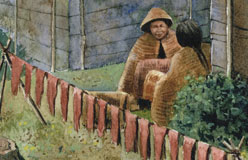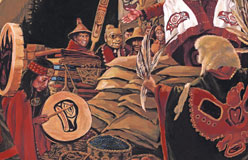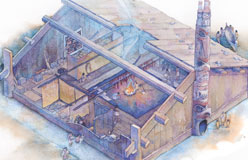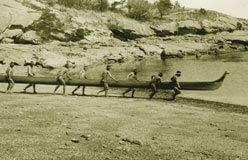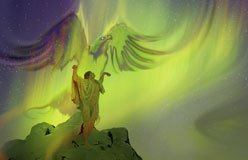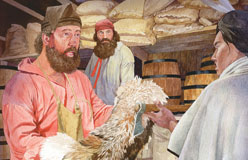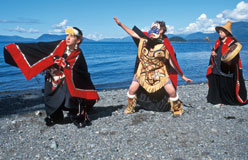People of the Northwest Coast often lived in villages divided into two groups. They were called moieties (MOY-uh-tees). Each moiety was made up of clans. A village might include two or several clans.
The members of a clan saw themselves as related because they shared the same spirit ancestor. Clans were part of larger groups. These groups were called phratries (FRAY-trees). Their main purpose was to oversee marriage rules and give help. People from the same clan, moiety, or phratry could not marry.
Each clan had three ranks of people: nobles, commoners, and enslaved people. Nobles were the richest members of their clan. Commoners were respected clan members. But they had less wealth than nobles had. Families could gain or lose social standing by increasing or losing wealth. The enslaved people were captives from other villages. They could not change their social standing. Usually, several related families lived together in a plank house, which was owned by the wealthiest man.
